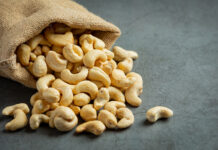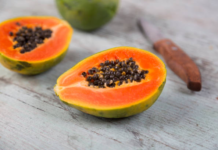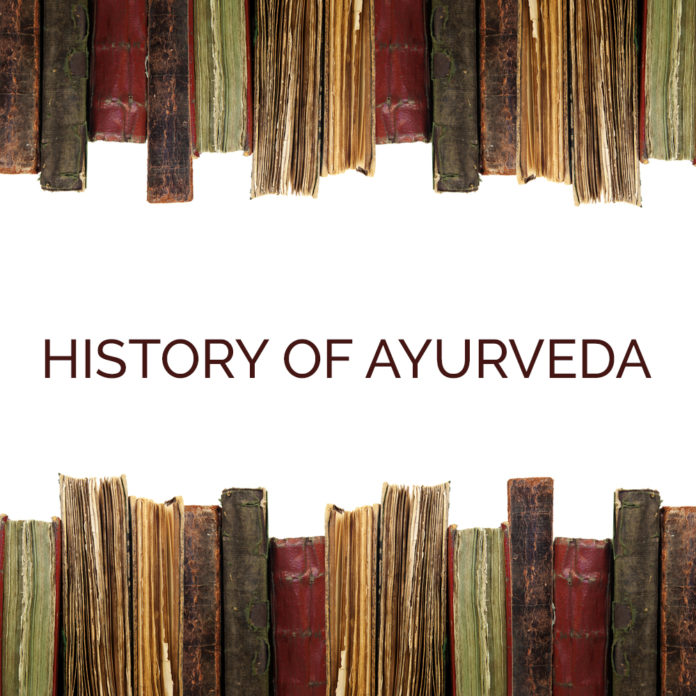The history of Ayurveda is rich, vibrant, and impressive. It has seen a winding path and faced obstacles of time. Yet it has transcended the odds and bloomed multifold times. So, the history of Ayurveda which gives life is worth some awareness and your time. The beautiful gift of Ayurveda has traveled from antiquity to modernism without losing its roots in nature, power, and effectiveness. It came as a providence showered by Lord Brahma 5000 years ago. It was passed on to his son Daksh Prajapati and then to Vedic gods like Ashwini Kumar. Going through many other gods its came to Acharya Bharadwaj and then finally his student Agnivesh. Agnivesh formulated it and there we had the Ayurvedic text of internal medicine. This divine compilation has passed on literally from Gods to Sages. Ayurveda is a science so pure and divine, it is a gift of the entire dedicated lives of Rishis and Munis who discovered a lot. And then all the discoveries were stored in the holy book of Vedas. The most important person in this process was Rishi Bharadwaj.
How did Ayurveda develop into tangible science?
Vedas are a form of primeval literature which is considered sacred Hindu scriptures. They are four Vedas but the Veda which pertains to the knowledge of Ayurveda is Atharva Veda. It is the one which categorically comprehends India’s ancient medical practice.
There have been many Ayurvedic texts. To put the basic categorization clearly in place, there are two halves. The great three classics of Ayurveda and the lesser classics of Ayurveda. The great three classics of Ayurveda comprises Charak Samhita, Sushruta Samhita, and Ashtanga Hridaya Sangrah.
Charak Samhita by Agnivesh details all about the diagnosis of a disease, its prevention, and cure. The Sushruta Samhita focuses on explaining the practice of surgery. It was put together by Sushruta, one of the scholars of Ayurveda. Ashtanga Hridaya Sangrah was coagulated by Vagbhata with a focus of the ability of Ayurveda to deal with internal medicine. This talks about the doshas and subparts of the body.
Coming to the lesser classics of Ayurveda, the first one explains about Panchakarma, the second one emphasizes on the qualities of foods, plants, and animals and throws light of the medicinal benefits of the above-mentioned elements, and the third one discusses diseases that could be carried by women and children.
Our post A Comprehensive Guide to Panchakarma and Rasayana gives an insight into the two important elements of Ayurveda.
How did Ayurveda travel and rise to fame?
A beautiful science which was created in universal consciousness in between 3300 to 1300 BC, the Atharvaveda influenced the Bronze Age civilization of the Indus valley to cultivate Ayurvedic cuisines like urad dal, turmeric, ginger etc. In the latter half, the Indus valley shifted to the Ganges basin and called themselves Indo Aryans or nobles. They started following this life-affirming, spiritual practices passionately, practices similar to Ayurveda.
The history of Ayurveda marks its formalized presence when this Indo Aryan or Ganges civilization put their foot into the Iron Age whose spirit was of logic, knowledge, and awakening. All through the world, there were scholars like Pluto and Aristotle awakening people with their teachings. Then there were Hebrew prophets in the Middle East and not to forget Lord Buddha in North India. Under such intelligent and insightful influences, the ancient Indian methods of treatment and healing became more revolutionized. This led to a more clear compilation of texts like Charak Samhita and Sushruta Samhita.
These texts further evolved and refined into the present age Ayurvedic texts. They thrived in the golden age under the Gupta Empire which was in the period of 320 to 550 CE.
The sudden slump: The age of East India Company
After this glorious and fortunate rise came to an unfortunate slump when the East India Company invaded India and the British Crown took over the rule. The British had the static approach and they only wanted to keep the Western medicines as the norm. So they totally quelled the branch of Ayurveda. They stopped their own botanists from compiling Indian knowledge with their own scholarly books. All the Ayurvedic texts, the researchers and techniques were undermined. This is how Ayurveda waned away at that time. It remained only in the peripheral areas and rural areas of India for a long time.
The Resurgence of Ayurveda
Only when India gained independence did Ayurveda resurface and come back to life and things changed 360 degrees. It was in the 20th century, that the people started traveling to India to acquire and utilize the teachings of Ayurveda and Yoga.
To the new generation disenchanted with the vicious cycle of modern medicine, Ayurveda came as an appealing option. The explosion of its beautiful realization is now just climbing up the ladder. Individuals are turning to Ayurveda for its immense benefits and no side effects. Ayurvedic plants such as aloe vera have become household names. To learn more about these plants, check out our post An Insight into Miraculous Ayurvedic Plants.
Final Words
The history of Ayurveda depicts how it has gone through a lot. It has been borne on the shoulders of Gods and sages and then has become the tool of the common man. From its stage of budding fame and sprouting success to a sudden slump and then once again an accent up on the ladder of success and popularity in the last two decades. Today, it is going further on to realize its wonderful and divine potential; thanks to the scholars and propagator.
















[…] Abhigyanam is targeted towards any specific medical condition of the patient. An appropriate and specific medicated oil set at the right temperature is applied at the specific points using the right pressure. This releases pains and toxins and stimulates energies. This gift of Ayurveda is a boon for patients suffering from illnesses. To know about the History of the mighty contributor, you may like it here: History of Ayurveda: Evolution, Resurgence, and Rise to Fame. […]
[…] Abhigyanam is targeted towards any specific medical condition of the patient. An appropriate and specific medicated oil set at the right temperature is applied at the specific points using the right pressure. This releases pains and toxins and stimulates energies. This gift of Ayurveda is a boon for patients suffering from illnesses. To know about the History of the mighty contributor, you may like it here: History of Ayurveda: Evolution, Resurgence, and Rise to Fame. […]